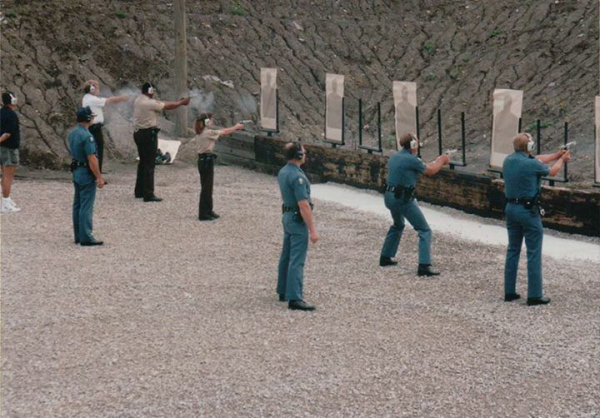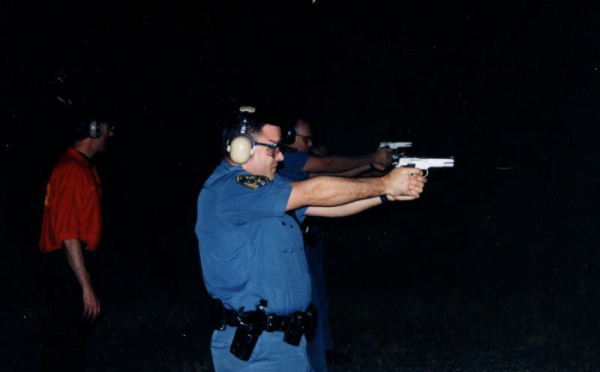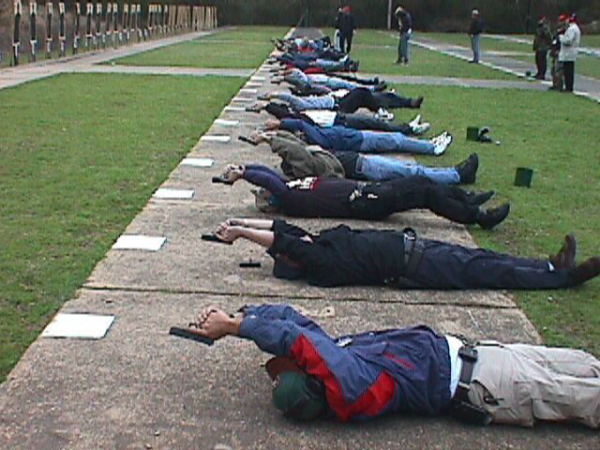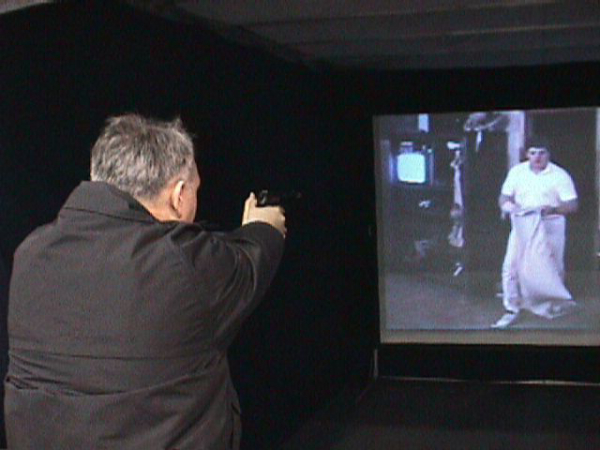“Back in the day,” I expressed to the bosses an assertion that had arisen in a national trainers’ conference: “Qualification isn’t training.” Their response was that the pre-POST organization governing training statewide said that “firearms qualification is training and they’re counting only a certain number of those hours per year toward in-service requirements.”

I noted that, like all of us, the organization had been wrong before, that it was no protection to the taxpayers in terms of performance on the street as well as justifying ourselves before a jury. Not only that, the state standard was a minimum; the people here paid enough taxes that minimum just wasn’t enough.
They ignored it. After a shooting that went wrong – though not tragically so – I got called in to present a proposal.
For that year, the troops had gotten 24 hours of firearms/defense tactics training for in-service and an hour each credited for the remaining three quarters of the year for “qualification.”
I was asked, “Why can’t we shoot?”
Drinking from the firehose, as it’s been called, isn’t refreshing. Having hydration breaks over time is a requirement for staying healthy. I proposed short bits, as I reported on in Law and Order Magazine in a piece I wrote called “The Case for Monthly Firearms Training.”
What I didn’t know is that my premise was not actually training; I was calling for sustainment. What’s that? Taking a cue from Dave Spaulding, let’s define terms.
From Merriam-Webster:
Training: noun: 1a: the act, process, or method of one that trains; b: the skill, knowledge, or experience acquired by one that trains; 2: the state of being trained
Practice: verb; prac·tice ˈprak-təs -transitive verb: … to perform or work at repeatedly so as to become proficient; b: to train by repeated exercises;
Sustainment: noun; the act of sustaining : maintenance, support
Traditionally, we calculated that once you get training, that’s enough, right? A senior member of service was outraged that I proposed monthly firearms training for the troops … not just the SWAT people.


“Why? They went to the academy, right?” This was the mid-1990s, some of our people had been on the job since the early 1970s.
Is that enough?
No.
Now, I’m forced to recognize an update in physical skills education concepts. I noted this late last year in a post from Bryan Eastridge, retired LE, podcaster and firearms trainer. I posted it on social media as a “quote of the day.”
Training- To teach a person a particular skill.
Practice- The repetitive application of a learned skill.
Sustainment- The support or maintenance of something.
In the LE firearms world, the training is adequately mediocre, the practice is nonexistent as how to practice is not trained and sustainment is rarely achieved due to the aforementioned training and practice. Quals aren’t training, practicing quals isn’t sustainment and sustaining skills isn’t training.
I was late to the game on this. While it may be commonly accepted in law enforcement training circles – I don’t believe it is at the agency level – it was news to me.

I was considering this while reading a blog from an executive protection outfit. There are different skills with different means of acquisition and retention – walking upstairs is an example of a skill executed without conscious effort after first learning it (unless something happens). That’s a “long-term memory,” involving balance and some rhythm. Other skills require practice and application.
For me – over time -- the strong side draw became reflexive. When I’ve been surprised – operationally or being unprepared on the range – I found that “it just happened.” Making a high percentage shot at distance is a different problem.
How to sustain? I’ve seen lesson plans online from various agencies that mention “perishable skills sustainment.” The outlines tend to mirror a basic training outline, with some granting all of four hours to complete. I’d recommend having an annual plan, for each trainee to get an hour per month. Some can be run on a video simulator (where available), an hour apiece one month on nothing but holster drills, an hour on precision drills another month, an hour on maintenance and another on flashlight techniques, etc.
In bite-size pieces, you have an opportunity to focus on one aspect and drill it without wearing the trainee out. The trainers? They’ll get better at those skills too.
Essential to the plan is (1) re-teach the skill, (2) have them work the skill, (3) teach how to practice the skill.
Small groups, scheduled for an hour per month on defense firearms skills – gunhandling, the law, precision shooting, weapon maintenance, discretionary decision making, one-handed shooting; you won’t run out of material.
As to the qual? Do what the state requires (and no more). Use the rest of the time and assets in preparation for the battle.
— Rich Grassi